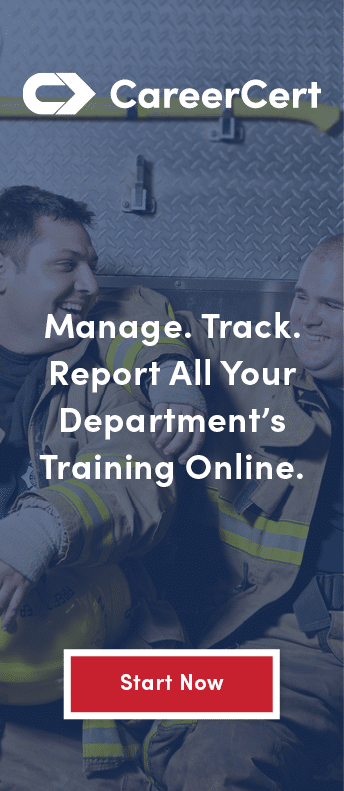4 Ways to Build Stewardship as a Servant Leader
 For more leadership training, watch our free webinar “Building Successful Leadership in Fire and EMS” or explore our online EMS and fire leadership courses.
For more leadership training, watch our free webinar “Building Successful Leadership in Fire and EMS” or explore our online EMS and fire leadership courses.
As servant leaders in emergency departments, our constituents are entrusted to our care. We are responsible for the impact that our actions have on our constituents, our organization, and our community.
Our duties include more than simply achieving our own objectives. We are responsible to achieve our organizational objectives and serve as stewards over our constituents.
Merriam-Webster defines stewardship as, “The careful and responsible management of something entrusted to one’s care.”
How do we demonstrate that “careful and responsible management”? It can be demonstrated in 4 specific components.
1. Take responsibility for your leadership role.
By taking responsibility for your leadership role, you accept moral and ethical requirements to care for those in your department or organization. This is not for the faint of heart. It is a greater responsibility than a balance sheet. It is ensuring that our actions meet our objectives, that we treat our constituents appropriately, and that we have a positive impact on our community as a whole. It is important to have this “global thinking” as a servant leader. It will impact every part of the business. When negotiating agreements, we will be looking for the “win-win-win” to ensure that it is a profitable and responsible agreement for all parties involved.
2. Take responsibility for your constituents.
Are we setting clear goals, objectives, policies, and guidelines for our constituents—and holding them accountable? In the process of setting these goals and objectives, are we ensuring that our constituents have the training, tools, and talent to achieve these objectives?
Part of holding our constituents accountable includes involving them in the process of setting goals, objectives, and guidelines. Involving a variety of voices and opinions in our organizational objectives and guidelines will help us to ensure every constituent has a personal stake in those objectives and guidelines and that our view is as comprehensive as possible. Each employee has insights that can expand and strengthen our own.
We do not benefit our constituents if we give them something to do that they cannot complete. It is important that we match the individual to the responsibility or position. Sometimes, as leaders, we will have to make the decision to move someone to a different seat on the bus. (If I may use the “bus” analogy from Jim Collins’ Good to Great, where he compares organizations to buses that require the right people to be on the right bus in the right seats before a bus can successfully set out for a new destination.) If one of our constituents cannot meet their goals and objectives, even if they’ve been provided with sufficient training and tools, it is time to move them to a different seat on the bus. Do not let the bus continue to limp forward while others attempt to pick up the slack.
Unfortunately, there are times when someone has to be removed from the bus. In many cases, that is a failure of leadership because we did not hire the right individual. Learn from your mistakes, act decisively, and do everything in your power to ensure your organization can continue moving forward.
3. Take responsibility for your organization and its actions.
It’s important to recall that our constituents frequently do not separate us as individuals from the organization. In their minds, the actions of the leaders are the actions of the organization. In addition, the successes or failures in our organization reflect on us as leaders.
Are we holding ourselves and our organization accountable for how we treat our constituents? Do we accept responsibility or try to cast blame? What are we using as our guide? What is our objective measure of success? What is our objective measure of how we successfully treat our constituents appropriately?
A positive way to take responsibility for the organization and its actions is to have a clear mission, vision, and value statement. (Learn how to build a successful mission, vision, and value statement with this management resource.) Use these tools as a mirror to review decisions, goals, and policies every day.
4. Hold yourself and others accountable.
What measure do you use to examine your own actions? This goes back to our previous leadership article on awareness. What is the highest and best standard for your position within the organization? How do you measure how you as a leader treat your constituents? How can you clearly set that high standard so your constituents know you expect them to be held to a high standard?
Hold your constituents accountable to the goals and objectives you agreed upon together. Let them be an active driver in that conversation. Provide them with the tools they need to achieve those stated goals and objectives.
At the same time, commit to your constituents how you will behave, what your goals and objectives are for yourself, and stick to them! Ask for honest feedback, preferably through a targeted, anonymous survey. Ask specific questions relating to your goals. Make sure your constituents know your role and that you are accountable as well.
For example: If your role requires you to keep your constituents informed about policies, check to see how well your constituents understand current policy and how often they receive communication from you.
A Sacred Trust
Leadership is a sacred trust. We are entrusted to provide an environment where both organizations and individuals will achieve their goals. Servant leaders do this with a mindful consideration of the individuals involved and how these objectives are achieved. Stewardship demonstrates that we are not only careful with our resources but we are careful with the individuals entrusted to our care.
References:
Collins J. Good to Great: Why some companies make the leap and others don’t. HarperBusiness; 2001.
Greenleaf R. Servant Leadership. Paulist Press; 1977.
Northouse P. Leadership: Theory and Practice. 6th ed. Sage Publications; 2013.
van Dierendonck D. “Servant Leadership: A review and synthesis.” Journal of Management. 2001: 37(4), 1228-1261.
 Scott M. Arthur, MBA—Scott Arthur has worked in the EMS and fire industries for 20 years as a paramedic and later as a director and senior director of operations. He currently works as a CareerCert instructor and as a business consultant helping organizations improve their safety and team leadership skills. Scott has a master’s degree in business administration and a bachelor’s degree in interdisciplinary studies. As an educator, Scott has presented at EMS conferences across the nation and enjoys connecting with first responders to improve department outcomes.
Scott M. Arthur, MBA—Scott Arthur has worked in the EMS and fire industries for 20 years as a paramedic and later as a director and senior director of operations. He currently works as a CareerCert instructor and as a business consultant helping organizations improve their safety and team leadership skills. Scott has a master’s degree in business administration and a bachelor’s degree in interdisciplinary studies. As an educator, Scott has presented at EMS conferences across the nation and enjoys connecting with first responders to improve department outcomes.



